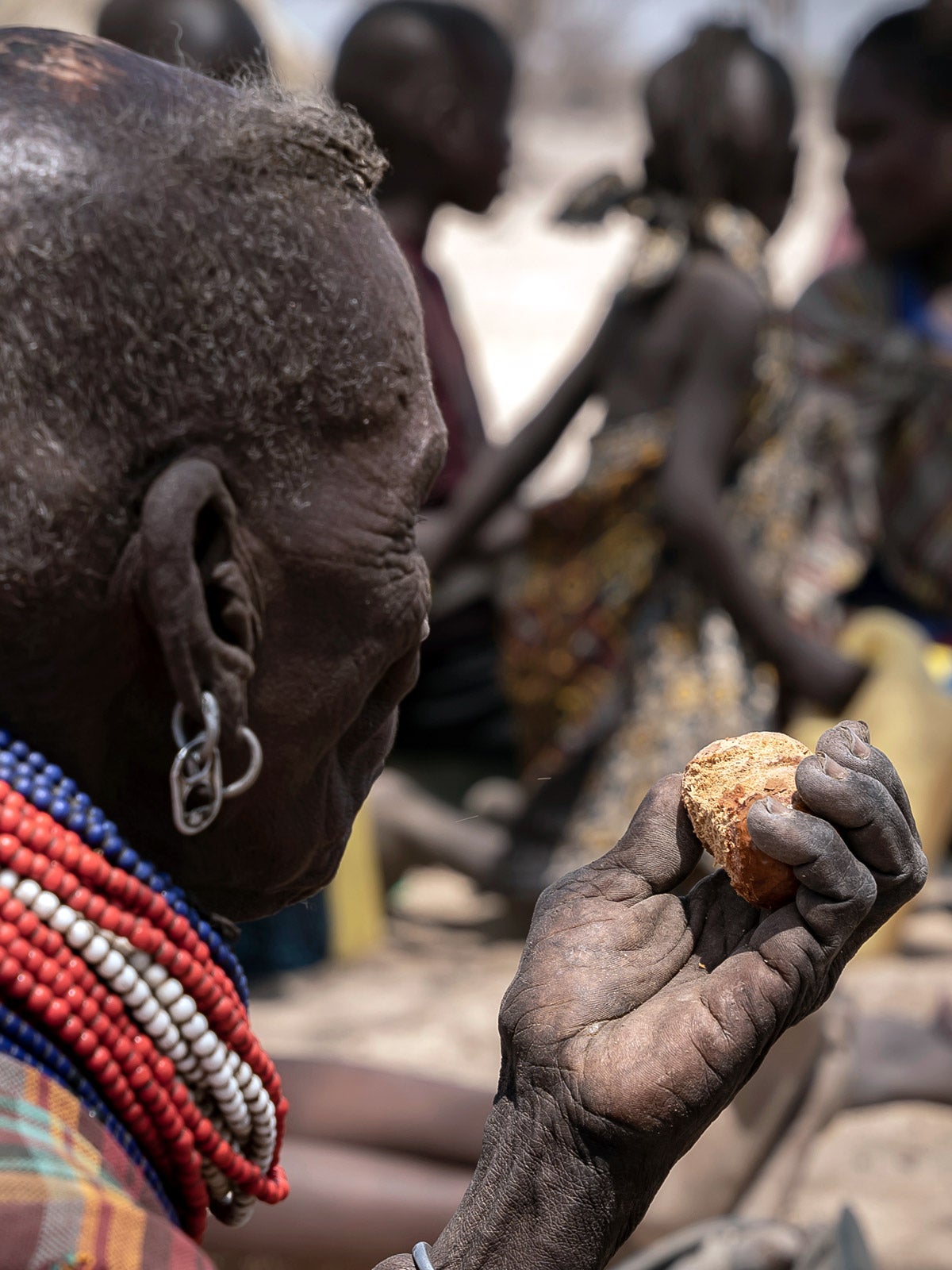
Opinion
It will take more than food to solve the hunger crisis.
Food insecurity is soaring round the world, driven by the converging crises of climate change, geopolitical conflict, and soaring prices for fuel, fertilizer, and food. In the 10 nations with the most extreme weather events, 48 million people are facing acute hunger — a figure that has more than doubled in recent years. More than 18 million are on the brink of starvation. Around the globe, nearly 345 million people are expected to face food insecurity this year.
Gabriela Bucher is the executive director of Oxfam International and a veteran of international development work, with decades of leadership on human rights and social justice. In May, she will take on a new role as president and CEO of the Fund for Global Human Rights. I spoke with her at a recent meeting of the Global Council of Deans of Schools of Public Health. Our conversation was designed to help these leaders of public health schools understand the scope of hunger worldwide and begin to think about how their institutions might support the work of addressing both the acute crisis and the long-term challenge of food insecurity. This is an edited transcript of our conversation.
Sign up for Harvard Public Health
Delivered to your inbox weekly.
The world turns at moments like this to organizations like Oxfam International, which have a long history of serving the parts of the world that are most in need. Gabriela, how do you understand this moment in food insecurity?
Bucher: From my reflection, the world seems distracted. We’re distracted, and we’re not focusing on this humanitarian catastrophe.
Across the world, there are so many hunger hot spots: Afghanistan, Yemen, Syria, the Horn of Africa, the Sahel, Central America—but also across high-income countries. Unfortunately, what we’re seeing are negative trends building on each other, creating a critical situation that looks like it can only worsen.
I’d like to focus for a moment on the Horn of Africa. The drought there is unprecedented. Pastoralists in that area of the world are masters of resilience; many nomadic communities have managed through difficult conditions for centuries. But this has now gone beyond what is manageable, beyond what their adapting mechanisms can handle.
And this crisis is coming to many more parts of the world. It’s not isolated to Africa. The percentage of earth that is affected by drought has more than doubled in the last 40 years.
Fuel prices and fertilizer prices remain elevated, which impacts farmers’ ability to plant, so food production is falling in many low-income countries. Yet overall, around the globe, the world produces more than double the number of calories that we need to sustain our population. That means the food is there, in a sense, but it’s not getting to those who need it—to the point where we have tens of millions on the brink of starvation. Could you unpack that for us, Gabriela?
Bucher: Absolutely, Raj. That is an important point. Food systems are very complex, but over the last few decades, we’ve seen an increasing concentration of food production and processing in the hands of a few. A handful of companies dominate the market.
One solution would be to invest more in smallholder farmers. This long-term solution requires sustained investment. At the same time, we need to address the very acute situation faced by millions today with robust humanitarian responses, led by local actors. However, funding is not keeping pace with increased need for humanitarian response. In addition, many low-income countries are caught in a debt crisis, which leaves little to invest in vital public services and the agricultural sector. In the last year, for every dollar invested in health, developing countries spent $4 in debt repayments. Many African governments spend an average of only 3.8 percent of their budgets on agriculture. Some spend as little as one percent.
Where there is a bit of investment, we see reasons for hope. For instance, in Somalia, I met farmers who were using water from solar-powered boreholes that we had installed to grow vegetables in very adverse conditions. I had been driving for 11 hours when I met them, and theirs was the only green patch I saw during that entire drive. Those were the proudest farmers I’ve ever met.
That was a ray of hope amid a dire situation. And hope is contagious.
This is why humanitarian organizations work hard to invest in pilot projects. If we can demonstrate that something works in a specific context, even if its sounds unlikely, we can make a case for investments to scale it into a bigger solution.
It’s not enough to bring a humanitarian response into a particular area and address the micro-problem for that year. We need to create fundamental, systemic change.
That’s a great example. And it also gets to a broader question. We have immediate, emergency needs with so many people hungry around the world. But at the same time, we know we’re in a long-term struggle, as climate change exacerbates food insecurity. This is not something that we’re going to solve in a year. How do you think about balancing short- and long-term needs?
Bucher: It definitely requires partnership. It’s not enough to bring a humanitarian response into a particular area and address the micro-problem for that year. We need to create fundamental, systemic change. Even as we’re saving lives, we must also focus on the root causes of the climate crisis and food insecurity.
The bright side of this doom-and-gloom scenario is that we do have the resources in the world to address many of these challenges. As we see extreme poverty and hunger escalating, we also know that billionaire wealth has been growing. How do we unleash those resources?
There is a significant group of extremely wealthy individuals in the world who are not being taxed fairly, in a way that would support governments to have the necessary resources to invest in people and our planet. A wealth tax of one to five percent on these multi-millionaires and billionaires could raise $1.7 trillion annually, which is enough to solve all the problems that we’ve been talking about here, and as we have showed in our report Survival of the Richest.
We all know that a lot more resources will be required, and the earlier we make the investments, the better returns we will have.
Top image: A woman of the Turkana tribe eats a palm tree seed. The East African region is facing the worst drought in its history: it has not rained in this region for more than three years and more than 36 million people are facing disastrous consequences to their health and livelihood. Photo: Simone Boccaccio / SOPA Images/Sipa USA (Sipa via AP Images)


